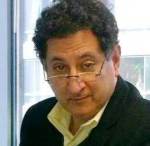Updated
Business Brief: Tangier-Med Port Leader in the Region; Chinese Electric Cars are Coming; Portugal and Morocco Ink New Agreements; Mixed Economic News on Equitable Growth
Jean R. AbiNader, MATIC
December 14, 2017
Tangier-Med Port remains leader in the region despite competition. The strategic vision behind the port, which is celebrating its 10th anniversary this year, has always been firmly fixed on its becoming the best and largest Mediterranean port as it expands to meet growing demand. Despite somewhat limited attempts by its neighbors to duplicate Morocco’s success, they are hampered by key advantages that support Tangier-Med, including extensive distribution and warehousing facilities supporting a strong diverse economy, a strong IT backbone, well-established routes to Europe and Africa, and most importantly, political stability and a high degree of security.
North African ports must accommodate the rising demand in the size of container ships. As Paul Tourret, director of the Higher Institute of Maritime Economy notes in Martime Transport, “Morocco is the country of North Africa with the most emerging economy. As such, it is really driven by international economic exchanges.” The growth in container traffic generated by industries grouped around the port, the transshipment of agricultural products from around the country, and automotive exports, have made Tangier-Med the leading competitor to Algeciras, Spain as leader in the region.
Not only is Tangier the larger in overall capacity and acreage, it also has plans to have the first automated terminal in Africa, enabling operations to be centralized to serve existing and planned facilities. While Algeciras has also embarked on extensive upgrades, it lacks space for continuous expansion sufficient to beat off the challenge for #1 from Tangier-Med.
Algeria is also making a belated run to expand its port offerings. However, with the decline in oil revenues and general bureaucratic wrangling, it is having difficulty launching its El-Hamdania new port project. The goal behind the project is to create a port that would be linked by rail to central and West Africa, so that goods from the eastern Mediterranean would unload and ship containers directly to intended markets rather than have a longer voyage through the Mediterranean.
Morocco’s answer is the initiation of the Nador West Med project to handle petroleum shipments through an infrastructure of off-loading and distribution networks, scheduled for completion by 2022. “Moroccans have understood that there are two commodities that need transhipment hubs at the scale of globalization, container and oil,” concludes Paul Tourret.
